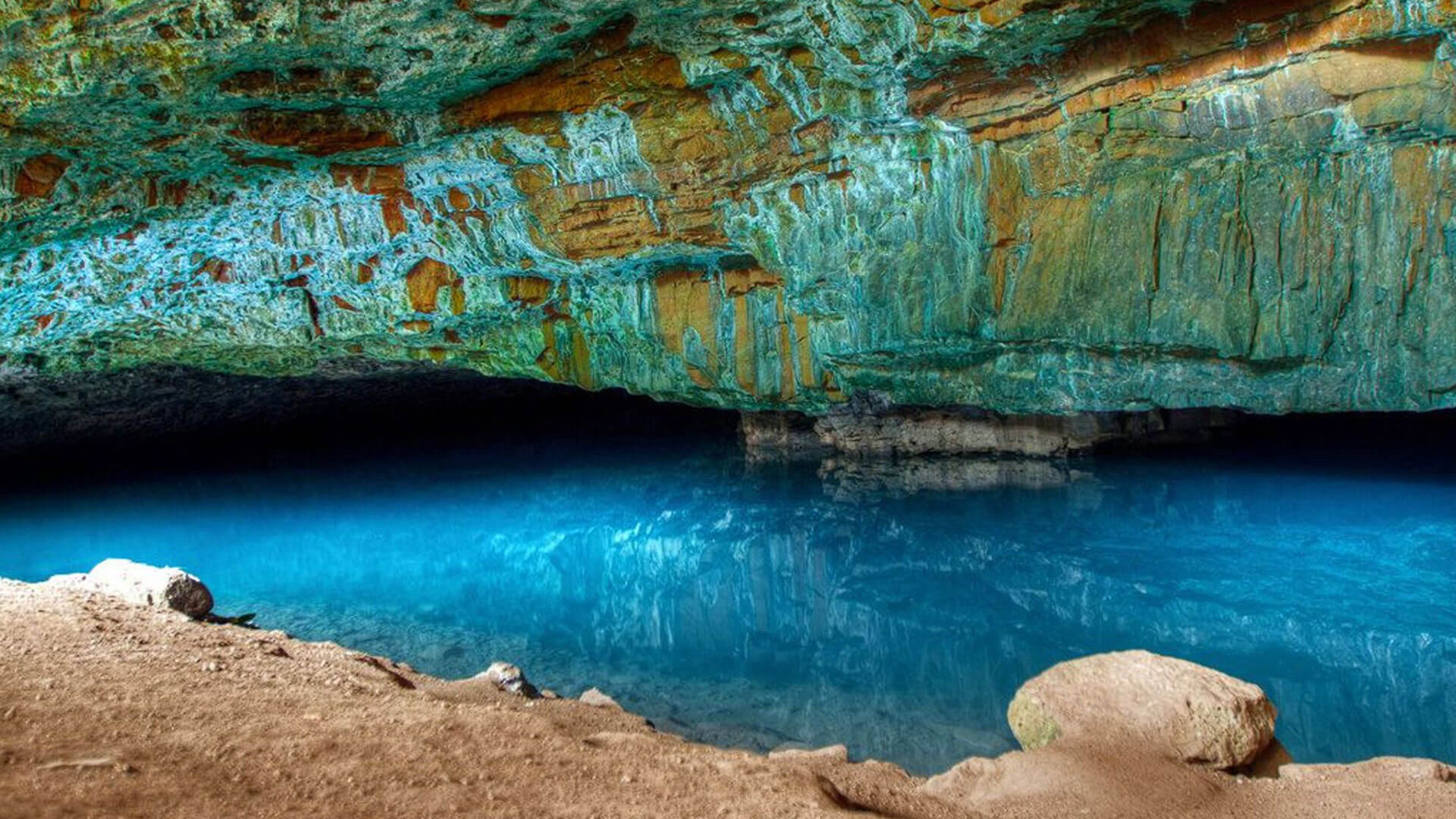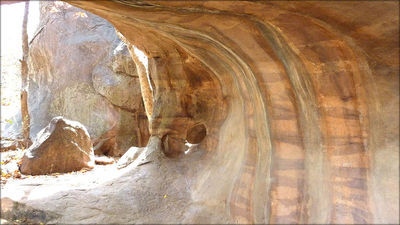If you’re interested in visiting famous caves in India, this article is for you! You can find details on the Ajanta Ellora and Elephanta Caves of Maharashtra, the Amarnath Cave in Uttarakhand, and the Naida Caves in Diu. We’ll also explain why these places are worth visiting. Read on to discover more. Once you’ve finished reading this article, you’ll know what to do next.
Ajanta Ellora and Elephanta Caves Maharashtra
There are many things to do in Ajanta Ellora and Elephant ruins, which can make the trip even more memorable. The caves in India are a great way to spend an afternoon or a day with your family, but you must know the best time to visit. Visiting the caves is best during the months of October to June, when the humidity is at a comfortable level. Visitors should avoid visiting during the monsoon season, which can make the island inaccessible. During this season, be sure to bring an umbrella, because rain can make it hard to walk and explore the entire island. In addition to that, you will need to check the ferries running to and from the caves, as they may not be operating.
Ajanta Ellora and Elephant ruins are among the most visited destinations in Maharashtra. These sites were built by the Vakataka Dynasty, and Ellora was primarily constructed by the Chalukya, Kalachuri, and Rashtrakuta rulers. To get to these amazing sites, you can book a taxi or take a State-run bus.
Liat Prah Meghalaya 
The longest natural caves in India is the Krem Liat Prah located in the Jaintia Hills district of Meghalaya. This 34-km long cave is also the longest in the country and is also home to the second-longest cave system in the country. Visitors to this cave system can witness incredible limestone formations and various surveys are carried out to better understand the structure of the cave.
There are numerous caves in Meghalaya, each with its own unique attraction. The Krem Liat Prah Caves, for instance, are made of natural limestones and sandstones. These caves are among the longest and deepest in the world. You can explore the entire cave system, including its underground lakes and streams. Taking a tour inside these caves is an unforgettable experience.
The second-largest natural caves in India is the Belum Caves, located in the Andhra Pradesh city of Kurnool. The caves are 3229 meters long and reach a depth of 120 feet below the entrance level. The caves were formed as a result of erosion of limestone deposits by the Chitravati River. The caves are lined with stalactite formations, siphons, and freshwater sources. The caves were once inhabited by Buddhist monks, and today there is a museum dedicated to their history and significance.
Amarnath Cave
Amarnath Cave is a sacred Hindu cave in the northern state of Uttarakhand. It is a two-month pilgrimage site, where thousands of Hindus come to worship Lord Shiva. The cave is home to the Shivling, an ice stalagmite, which forms a natural Shivling. Each year, lakhs of people visit the cave and chant the sacred mantras. Book India Tour Packages
The ice inside the cave was formed by trickling water from the top of the mountain. When this water froze, it assumed the shape of a Shiva lingam, and it took its complete form on the holy day of Purnima. Legend has it that Shiva revealed the secret of life to Parvati in the cave, which is considered one of the most sacred places on Earth.
The Amarnath cave is one of the most popular pilgrimage sites in India. It is the holiest cave in the country and is home to a 5,000-year-old shrine to Lord Shiva. The cave is located at an elevation of 3,888 meters and is surrounded by snow-covered mountains. Tourists can visit the cave only during the summer season, when the temperature is warm enough.
Naida Caves Diu
Discover the amazing world of Indian rock formations and sunlit canyons by exploring some of the country’s most famous caves. From Naida Caves to Diu, you’ll be blown away by the incredible beauty of this unique landscape. Here, you’ll find unique rock formations and sunlit canyons, along with countless other amazing features. Here’s a quick run-down of some of the best Indian rock formations.
The Naida Caves are a series of interconnected hollows and steps located just outside the city mass of Diu. They were created during the Portuguese rule when they took down a large portion of the city’s rocks and built these caves. They are reddish-brown in color and have several layers of rock that can be seen on the face of the rocks. If you visit this area during the day, you can spend 30 minutes to two hours touring this magnificent cave complex. Book Maharajas Express
The Naida Caves are located in Diu, and are accessible by bus 3 or 213 from the town center. The caves are open from 7:30 pm to 5 pm in the winter, but are often crowded during the summer months. During the summer season, the caves can be quite hot and humid. You should bring a waterproof jacket and sunscreen for the caves, and prepare for a long day of hiking.
Bhimbedka Caves Madhya Pradesh 
The Bhimbetka rock shelters are an archaeological site in central India. They span the Paleolithic and Mesolithic periods as well as the historic period. The caves showcase the earliest traces of human life in India, with evidence dating back to Acheulian times. For those who are interested in history, the caves are a must-see for any tourist visiting Madhya Pradesh.
To make the most out of your visit, plan to visit the caves in India from September to March when the climate is mild. This time of year will allow you to experience the cave’s natural beauty at its best. It is open all weekdays, except on Mondays. Visiting the caves is a wonderful experience for history buffs and students of ancient art. You will be amazed at the sheer number of cave paintings and relics found here.
The paintings at the Bhimbetka caves are divided into periods. There are approximately 500 paintings in total, although some experts believe that there may have been more. The caves are named after Bhima, a character in the Hindu epic Mahabharata. Bhima was the second Pandava brother and was exiled. Legend has it that he would meet local people in the caves and interact with them. As a result, the name “Bhimbetka” is also derived from Bhimbaitka, the Bhima.
Udayagiri Caves Andhra Pradesh
There are approximately 20 caves in the complex of Udayagiri, and they have been carved by Hindu artists for thousands of years. Some caves are more impressive than others. Cave number five contains the Varaha statue, which depicts Vishnu in his man-boar form rescuing the goddess Earth. The cave also contains ruins of buildings and habitation mounds.
The two main caves in Udayagiri are Hathigumpha and Sarpa Gumpha. Hathigumpha is often referred to as the elephant cave, with inscriptions from King Kharavela that detail his various conquests and leadership style. Vyaghara Gumpha, also known as the Tiger Cave, is another popular attraction in the complex. The Udayagiri Caves feature mythological and historical themes throughout the structures.
The largest cave complex in India, Udayagiri is a series of sections. The ground floor is 180 degrees in width and contains seven rock-cut doors. Each section is filled with beautiful rock-cut sculptures and intricate interior work. The cave is located near the middle section of the hill. Udayagiri is a short distance from the city of Hyderabad. This cave complex is well worth a day trip from Hyderabad.
Kutumsar Caves Chhattisgarh
Kotumsar cave, also known as Gopansar cave, is located near the village of Kotumsar in the Indian state of Chhattisgarh. This natural wonder is one of India’s leading ecotourism destinations. There are many ways to enjoy this place, including hiking, caving, and birdwatching. For the most beautiful experience, you should visit the cave in the early morning.
The Kutumsar caves are among the world’s longest caves, measuring four hundred and twenty-seven meters. They were discovered during the British era and later gained recognition. Originally known as Gopansar cave and hidden cave, the caves’ name was changed to Kutumsar after the village Kotumsar. It has several different kinds of speleothems, including limestone formations and stalagmites. You can explore the caves with guides and solar lanterns. Book Holiday Packages in India
The caves are full of fascinating stalactite and stalagmite formations, and the sound of rushing water is the ultimate sensory experience. You’ll be amazed by the natural beauty of these natural wonders and the echoes they produce. The caves are also home to a number of endangered species, including the genetically-blind bat.
Khangkhui Cave Manipur
The cave is famous for its massive stalagmites and stalactites that tell the story of a distant past. King Mangsorwung constructed the cave to house his queen. The cave is also known as the throne room or the Durbar of the Devil King. Today, the cave is a must visit attraction for all history buffs in Manipur. In addition to the cave’s beauty, its ancient history and archaeological evidences will captivate visitors of all ages.
The Khangkhui Cave is a natural limestone cave in Manipur. The cave was discovered in 1881 and is one of the most popular tourist attractions in the state. There are many fascinating artifacts that can be seen inside the cave, including the remnants of Stone Age habitations. Visitors to Khangkhui Cave are also able to learn about the history of Manipur by visiting the Shirui Hills.

